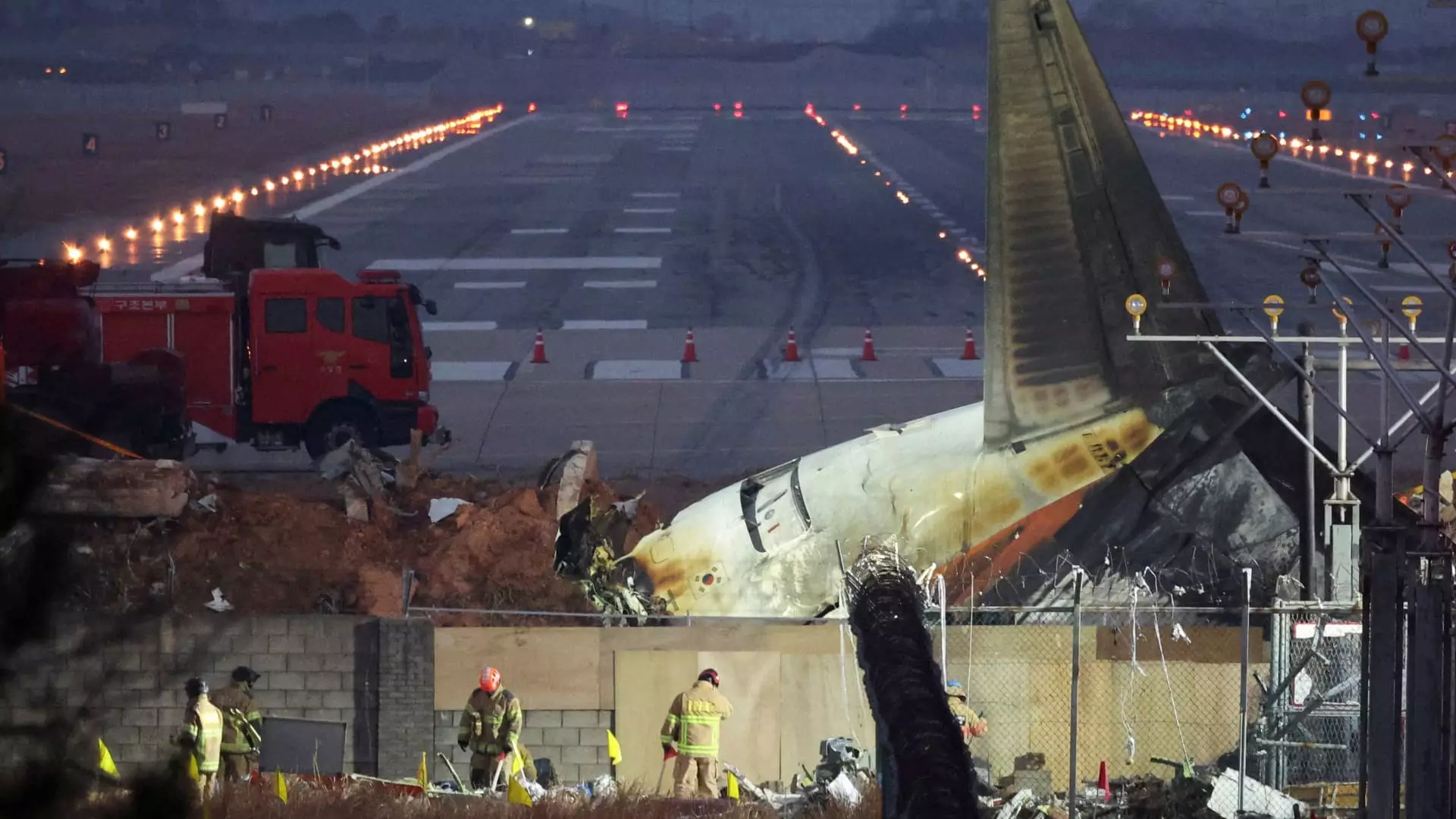On a recent morning, Jeju Air Flight 7C2216 experienced a catastrophic failure while attempting to land, resulting in the deaths of 179 passengers and crew aboard the Boeing 737-800. The aircraft, having completed an overnight journey, belly-landed on the runway, and tragically, it collided with a mound of dirt and a concrete wall designed to act as a safety barrier. The incident marks one of South Korea’s most devastating air disasters, prompting widespread scrutiny of both the aviation technology in use and the infrastructure surrounding airport operations.
Initial investigations into this tragic event will delve into multiple areas spanning aircraft maintenance details, pilot scheduling protocols, operational workflows, and maintenance of the landing systems. Reports indicate that a potential bird strike may have interrupted normal engine function, but the full scope of contributing factors remains speculative at this point. Experts agree, however, that the airport’s design and its implementation of safety features will also be in sharp focus as investigators piece together this complex puzzle.
The mishap highlights a critical conversation regarding aviation safety standards and the role that airport design plays in preventing accidents. Analysis from Todd Curtis, an aviation safety expert, emphasizes the detrimental effect of the concrete wall positioned beyond the runway’s end. Unlike other airports that have implemented effective engineered material arresting systems (EMAS) to cushion overruns and stop aircraft safely, the barrier at Muan International Airport did not display such features. As noted in the aftermath of the incident, necessary adjustments to these safety features could have potentially diminished the fatalities experienced in this disaster.
The design flaws associated with Muan International Airport’s runway safety systems bring to light significant issues in aviation regulatory compliance and safety. To mitigate future tragedies, we must reconsider the way airport boundaries are constructed and maintained. Aviation experts advocate for modern safety measures that include frangible barriers, capable of yielding upon impact to minimize the risk of structural damage to any aircraft that strays off the runway.
The devastating crash of Jeju Air Flight 7C2216 underscores the vital importance of not only enhancing aircraft performance reliability but also the need for rigorous airport infrastructure assessments. As investigations unfold, it remains imperative to implement learning outcomes that prioritize passenger safety through advanced technological means in both aircraft and airport design. Future aviation regulations must reflect a commitment to continuous improvement in safety protocols, ensuring that such tragedies are not merely recorded in history but serve as catalysts for systemic enhancement.

